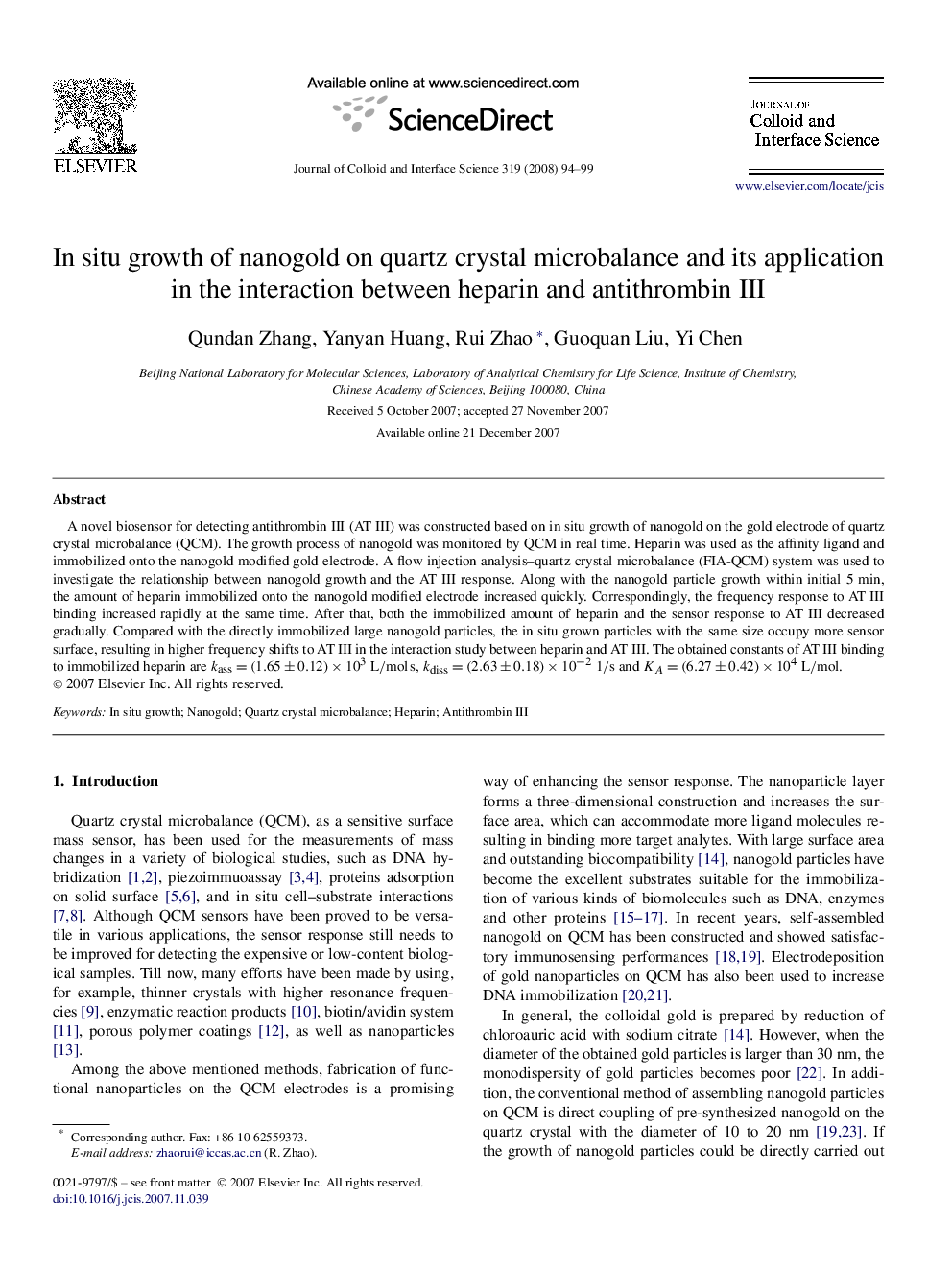| Article ID | Journal | Published Year | Pages | File Type |
|---|---|---|---|---|
| 611454 | Journal of Colloid and Interface Science | 2008 | 6 Pages |
A novel biosensor for detecting antithrombin III (AT III) was constructed based on in situ growth of nanogold on the gold electrode of quartz crystal microbalance (QCM). The growth process of nanogold was monitored by QCM in real time. Heparin was used as the affinity ligand and immobilized onto the nanogold modified gold electrode. A flow injection analysis–quartz crystal microbalance (FIA-QCM) system was used to investigate the relationship between nanogold growth and the AT III response. Along with the nanogold particle growth within initial 5 min, the amount of heparin immobilized onto the nanogold modified electrode increased quickly. Correspondingly, the frequency response to AT III binding increased rapidly at the same time. After that, both the immobilized amount of heparin and the sensor response to AT III decreased gradually. Compared with the directly immobilized large nanogold particles, the in situ grown particles with the same size occupy more sensor surface, resulting in higher frequency shifts to AT III in the interaction study between heparin and AT III. The obtained constants of AT III binding to immobilized heparin are kass=(1.65±0.12)×103 L/mols, kdiss=(2.63±0.18)×10−2 1/skdiss=(2.63±0.18)×10−2 1/s and KA=(6.27±0.42)×104 L/molKA=(6.27±0.42)×104 L/mol.
Graphical abstractIn situ growth of nanogold on quartz crystal microbalance was realized for enhancing the sensor response and applied to determine the interaction between heparin and antithrombin III.Figure optionsDownload full-size imageDownload as PowerPoint slide
